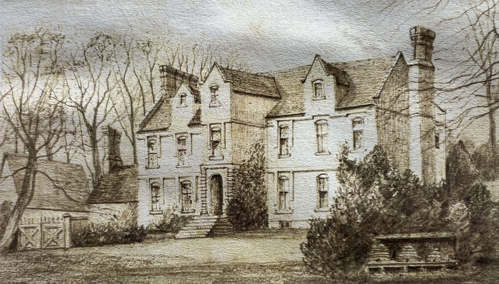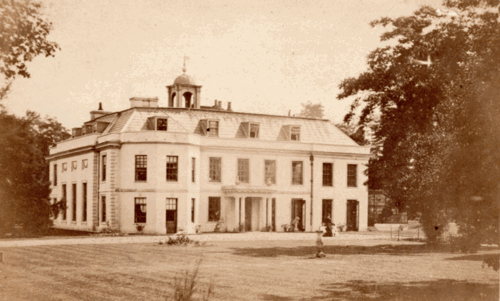Philanthropic Landowners: Country Houses That Gave Back to the Community
Throughout British history, country houses have often been more than private residences, serving as pillars of their communities, their owners quietly shaping local life through acts of generosity, leadership, and social responsibility.
Philanthropic Landowners: Country Houses That Gave Back to the Community
by Kelly Morrison, Pursing The Past.
Throughout British history, country houses have often been more than private residences, serving as pillars of their communities, their owners quietly shaping local life through acts of generosity, leadership, and social responsibility.
While the grandeur of these estates can seem worlds apart from everyday village life, the stories behind their gates reveal a tradition of philanthropy and community spirit that continues to inspire. In this post, we explore three remarkable country houses whose owners made a lasting difference to those around them.
View Our Country House Locations
Meagram House, Swaby: The Ayres Family and Rural Giving
On the edge of the Lincolnshire Wolds, Meagram House stands as a sentinel over rolling fields, a property whose story is inextricably linked to the agricultural rhythms of rural life and the quiet generosity of its owners. In the 1980s and 1990s, Vincent Lionel Ayres and his wife Sheila made Meagram House their family home. Yet their legacy extended well beyond its walls.

Sheila Ayres, in particular, became a central figure in the local charitable landscape. As secretary of the Willoughby Riding for the Disabled group, she opened Meagram House’s fields and stables each summer, welcoming children and adults with disabilities to enjoy the freedom and joy of country rides. The house became a place of laughter, learning, and connection, its paddocks providing a place of encouragement.
The Ayres’ hospitality was not limited to equestrian pursuits. Meagram House also hosted coffee evenings and community fundraisers, supporting various causes, including Christian Aid. These gatherings, though modest in scale, reflected a spirit of inclusivity and service, transforming a private country residence into a hub of rural philanthropy. In this way, the Ayres of Meagram House embodied the best traditions of country house stewardship: using their home as a resource for the wider community and quietly enriching village life.
Charlton Hill Manor, Wroxeter: Louisa Harriett Jenkins and a Life of Quiet Generosity
Perched on an ancient ridge overlooking the remains of Roman Viriconium, Charlton Hill Manor is a fine example of seventeenth century architecture and a testament to generations of stewardship, community connection, and quiet philanthropy. For much of the nineteenth century, its story was shaped by Louisa Harriett Jenkins, a woman whose life of service left an indelible mark on Wroxeter and Eaton Constantine.

Charlton Hill was built around 1660 by Richard Jenkins, a Royalist lawyer whose fortunes rose through loyal service to the Newport family. Over centuries, the estate passed through the Jenkins line, each generation adding to its story. By the mid-1800s, the manor had evolved into a substantial farming estate, its red brick walls and elegant gables sheltering not just the Jenkins family but also a bustling household of staff, tenants, and agricultural workers.
Louisa Harriett Jenkins, born into this legacy, spent her entire life at Charlton Hill. By the 1860s, she had assumed the formidable task of managing the estate - overseeing its 325 acres, employing local men and boys, and ensuring the smooth operation of both the house and the farm. But Louisa’s influence extended far beyond efficient management. She was known for her generous spirit, quietly supporting parish causes, aiding those in need, and ensuring that the estate’s prosperity benefited the wider community.
Anecdotes from local papers and family records speak to her involvement in charitable works and her reputation for kindness. Whether distributing food to people experiencing poverty, supporting parish events, or providing stable employment for villagers, Louisa’s approach was practical and unassuming, rooted in a deep sense of duty to the land and its people.
Her final years were marked by the same quiet resilience that defined her life. She continued to run Charlton Hill into her seventies, supported by her niece Mary and a loyal staff. When Louisa died in March 1886, the village mourned the loss of a benefactor and friend. Her funeral at Wroxeter church was simple but deeply symbolic, attended by family and neighbours, with estate tenants serving as mounted bearers, a moving tribute to a life spent in service.
Wherwell Priory, Hampshire: Lord and Lady Gardner - Philanthropy on the River Test
Set on its own island amid the tranquil waters of the River Test, Wherwell Priory is a country house layered with centuries of history. Its elegant Georgian façade and ancient abbey origins form a fitting backdrop for stories of both grandeur and generosity. Among the Priory’s most distinguished residents were Lord and Lady Gardner, whose decade-long tenancy in the mid-nineteenth century became synonymous with quiet philanthropy and genuine care for the local community.

Lord Gardner, a man of literary and sporting renown, overcame the early loss of both parents to secure his father’s barony. His life was woven into the fabric of Victorian society: he moved in the literary circles of the Countess of Blessington, served as a Lord of the Bedchamber to William IV, and as a Lord-in-Waiting to the Queen. Yet, it was at Wherwell Priory, alongside his second wife Julia Fortescue, that those outside the aristocratic sphere most keenly felt Lord Gardner’s legacy.
For over ten years, the Gardners made Wherwell Priory not just a home of stately beauty but a centre of kindness and practical charity. The Hampshire Chronicle, reporting on Lord Gardner’s death in November 1883, noted that ‘Lord and Lady Gardner resided at Wherwell Priory for over ten years, where their kindness to the poor earned them the respect of everyone.’ Their generosity was not performative or distant; it was woven into the rhythms of village life - supporting local families, responding to hardship, and ensuring the estate’s prosperity was shared beyond its gates.
Wherwell Priory itself, with its blend of medieval monastic remains and refined Georgian additions, provided a setting where tradition met progress. The Gardners’ approach to philanthropy reflected this spirit: rooted in the old values of stewardship but forward-looking in its inclusivity and warmth. Their actions left a legacy remembered long after their departure - a reminder that the true prestige of a country house lies not just in its architecture or lineage but in the lives uplifted by those who have called it home.
As house historians, we don’t just document dates and deeds, we uncover the generosity, empathy, and quiet leadership that once flowed through these homes. The stories of Meagram House, Charlton Hill Manor, and Wherwell Priory reveal that country houses were not only sites of architectural beauty or family tradition but also centres of community care. Their owners opened doors, offered support, and shaped the lives of those around them in ways still felt today.
By piecing together these acts of kindness from letters, ledgers, and local memory, we see how philanthropy and stewardship were woven into the fabric of daily life. Each property tells a story of giving, sometimes grand, sometimes humble, that helped communities flourish and reminds us that the legacy of a house is measured as much in lives touched as in bricks laid.
As we continue our research, it’s a privilege to give voice to these histories of compassion and service. Every house's history is an invitation to remember, celebrate, and carry forward the spirit of giving that truly makes a house a home.
Visit Pursuing The Past to discover more about their services.
Submit to Storia
Submit your story using the form below. We will review your submission and notify you within two weeks if your submission has been accepted. We may ask for some additional information.
If your story is accepted, we will contact you with a publication date.
Submit your story